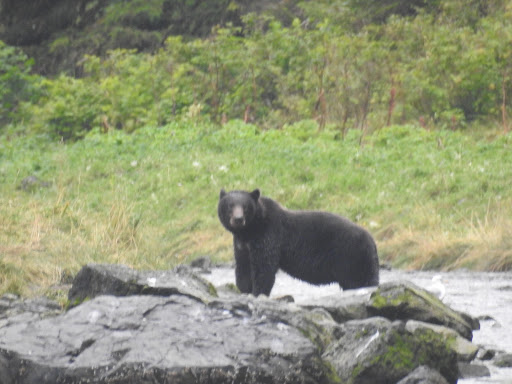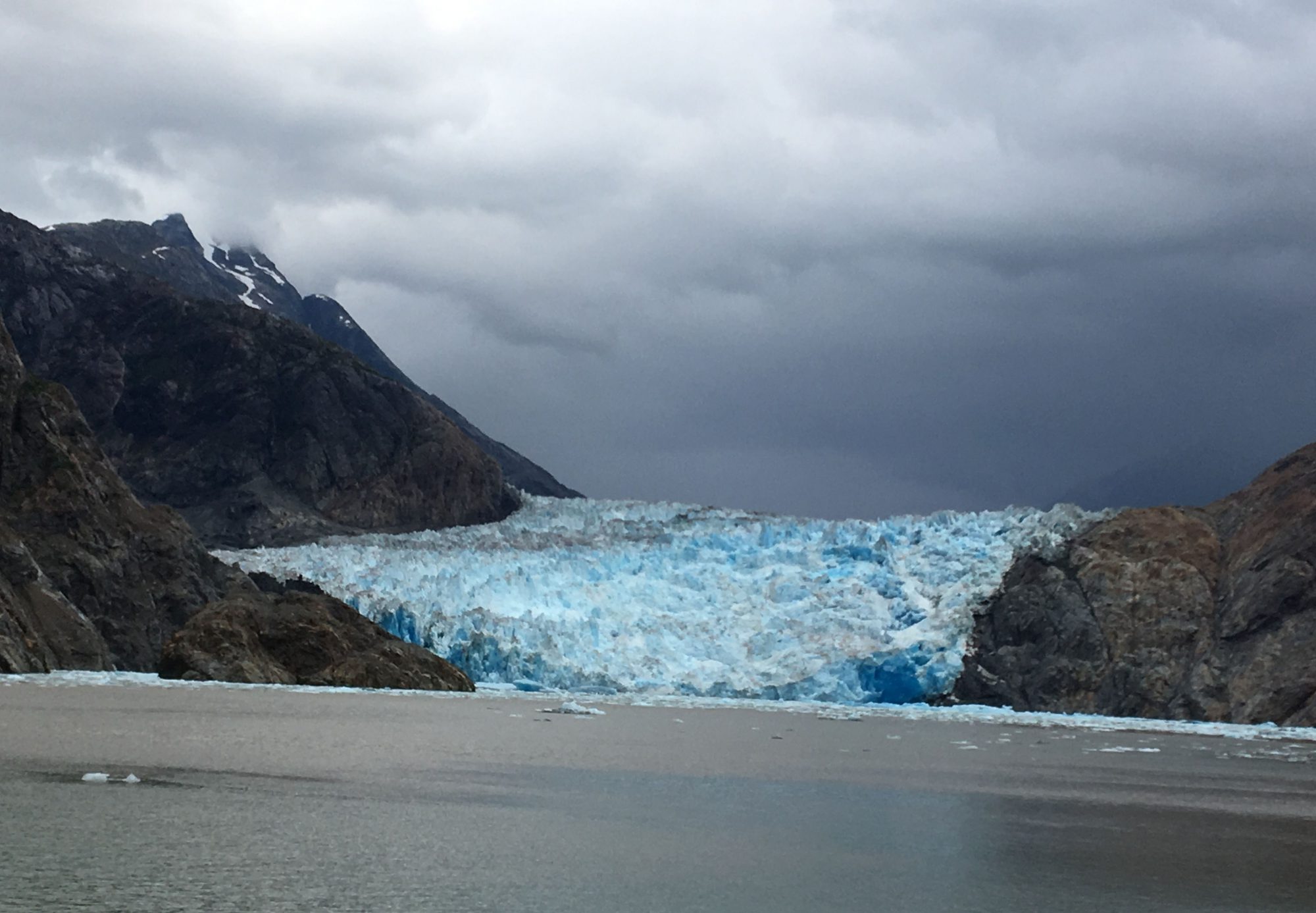On facing natural hazards in present and future.
“Common sense is the least common sense.” – Carlos Navarro Serment
Many thanks to Greg and Shannon McKinnon for the image share!
One of the most important things to consider about the wilderness is that the most dangerous condition you will encounter is your own ignorance. It’s important to be oriented to hazards and know what precautions you must take in advance of your first encounter! This prevents harm to both explorers and the wilderness itself.
While most of us are familiar with some hazards such as cold; and coddled by the crew’s handling of hazards of navigation, tides, and nutrition, hiking in Alaska means we must be aware that we are firmly in bear country.
The following is excerpted and slightly edited from one of our earliest shipboard talks – bear safety, by noted naturalist Carlos Navarro Serment, a talented naturalist and wildlife photographer who has published a book about bears (El Oso Negro) and is editing a second; and is actively engaged in rewilding of grizzlies in northern Mexico.
Bears are part of why you are here! They are the kind of animals that make the wilds wild. The myths about bears may stem from their creepy similarity to humans. A bear steps with its whole foot, like a human. If a bear’s skin is removed, the body except for the head looks strangely human. So people have always had stories about bears. By the way, the trails in southeast Alaska are like nowhere else, there are few maintained trails. Mostly we will follow the beach, perhaps see a board walk, or follow game trails from deer or bear.
It is possible to encounter bears anywhere we go on this trip, even in town, brown or black. I am not trying to scare you, but I am trying to scare you a little bit. A little bit of fear is healthy, it keeps you on your toes. You don’t want to surprise a bear. Let him know you are coming. Some people sing bear songs or call “hey bear” as they enter the woods. There is a misconception that bears don’t see very well. Bears are not really short sighted. They can see at least as well as we can. If you can see the bear, they can see you. Never run from a bear, or any other predator. Instead, group up, look larger, and engage in “hey bear” noisemaking. After this raucous greeting, the bear will often charge. Don’t worry, they often engage in false charges, charging at you aggressively multiple times before running away. When you group up, let your naturalist stay in the front of the group. Bear spray is only effective under 25 ft. And only if the wind is blowing away from you. Bear spray is concentrated capsacin designed to incapacitate a 500 pound animal which navigates the world mostly by smell, so bear spray in your face will at least make you cry and vomit and most likely result in hospitalization once we can taxi you to the next port.

How many of us are aware of the dangers we may encounter in our local wilderness and prepared for it? If we knew the dangers would we adventure more often? It is always wise to be prepared. As Carlos mentions, the thrill of the encounter is part of why we are driven to explore.
These sites offer a great start: http://www.hikingdude.com/hiking-health.php
http://www.yourhikeguide.com/category/hiking-hazards/
though I can’t believe none mentioned poison ivy! Which, by the way, is having a boom year here in Maryland – scientist are blaming it on warming temperatures and increased CO2. http://www.npr.org/templates/story/story.php?storyId=128650169
Which brings us to the longer term preparations to consider in our region. Humans tend to ignore that isn’t immediate or is hard to imagine. As a tidal plain, my region should be looking here: https://oceanservice.noaa.gov/hazards/natural-hazards/
And developing a plan for resilience.



